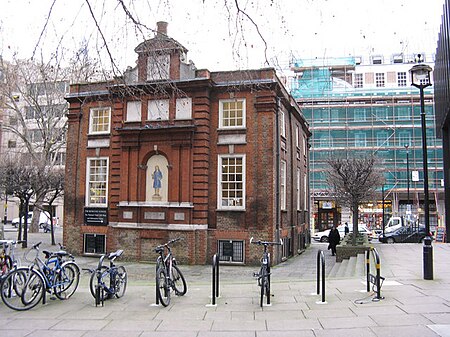Caxton Street

Caxton Street is a street in the City of Westminster in London that runs between Buckingham Gate in the west and Broadway in the east. It is joined on the north side by Vandon Street and crossed by Palmer Street. The street was once named Little Chapel Street. The street is named after William Caxton, who introduced the printing press to England.It is the location of the grade I listed Blewcoat School, grade II listed Caxton Hall, and previously, the National Map Centre.Alliance House, an eight-storey office block at number 12, on the corner with Palmer Street, opened in November 1938, with the demolition of the Westminster Hospital Medical School building, site clearance and construction, all being completed in under 12 months. It is the headquarters of the United Kingdom Alliance temperance movement, with a large meeting room, Alliance Hall, and much of the building let to other companies.St Ermin's Hotel was a meeting place of the British intelligence services, notably the birthplace of the Special Operations Executive (SOE), and where notorious Cambridge Five double agents Philby and MacLean met their Russian handlers.
Excerpt from the Wikipedia article Caxton Street (License: CC BY-SA 3.0, Authors, Images).Caxton Street
Caxton Street, London Victoria
Geographical coordinates (GPS) Address Nearby Places Show on map
Geographical coordinates (GPS)
| Latitude | Longitude |
|---|---|
| N 51.49855 ° | E -0.13498 ° |
Address
Caxton Hall
Caxton Street 10
SW1H 0AQ London, Victoria
England, United Kingdom
Open on Google Maps








